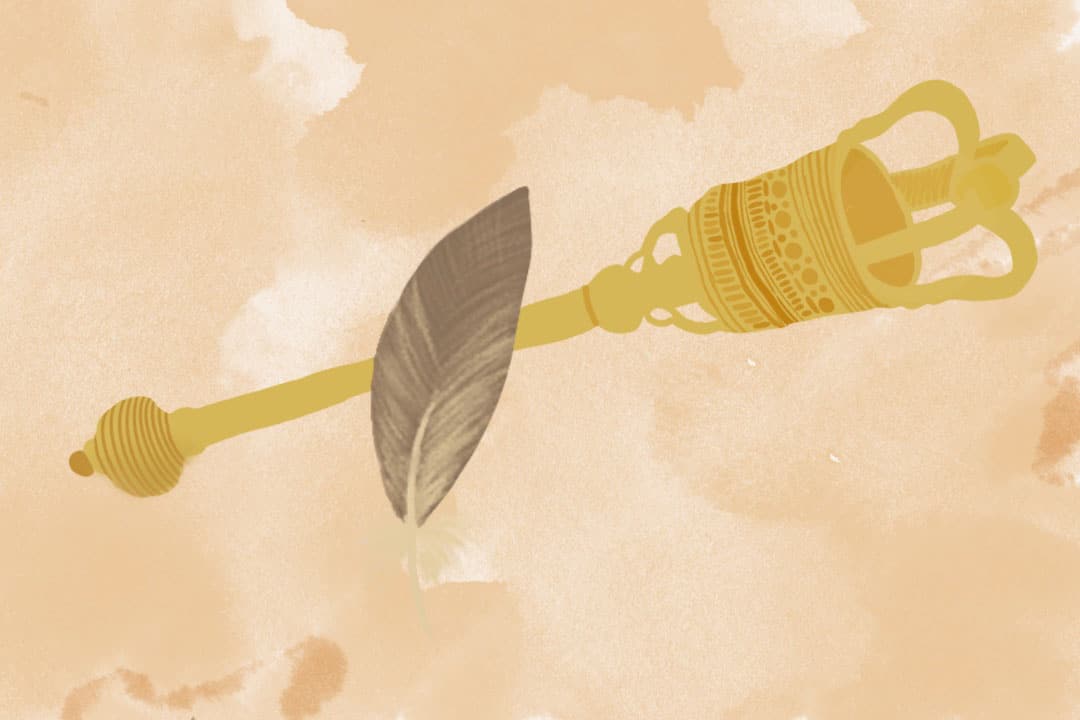On May 16, the Ceremonials Committee approved a new ceremonial element for in-person convocation. U of T introduced the element — the Eagle Feather — to enhance Indigenous representation at convocation and to highlight the university’s commitment to Truth and Reconciliation.
Developing the element
President Meric Gertler gave a short presentation on the element at the Academic Board meeting on May 26. In January 2017, U of T’s Truth and Reconciliation Steering Committee submitted its report, Answering the Call: Wecheehetowin, to Gertler and Vice-President and Provost Cheryl Regehr.
“One of the general recommendations coming out of that process was the importance of enhancing Indigenous inclusion on our campuses in every way possible,” said Gertler at the meeting.
Then, in 2018–2019, a review of convocation at U of T — co-chaired by Bryn MacPherson, assistant vice-president, office of the President and chief of protocol, and Sheree Drummond, secretary of the Governing Council — called for Indigenous representation in convocation ceremonies. The review committee considered elements for Indigenous representation informed by the steering committee’s report.
However, the review committee decided that in order to recommend appropriate measures for Indigenous representation, the university must undertake further consultations.
In an email to The Varsity, a U of T spokesperson wrote that the university consulted members of the Elders Circle at First Nations House (FNH), Indigenous students and alumni, and Indigenous leadership from all three U of T campuses. Through these consultations, the university developed the introduction of the Eagle Feather element. The university then brought the recommendation to the Ceremonials Committee on May 16 for approval, which was granted.
The Eagle Feather
The U of T spokesperson explained that, while the Eagle Feather is “not a universal symbol of Indigenous people and nations,” the decision for its inclusion was the result of consultations with U of T’s Indigenous community.
On the significance of the Eagle Feather, the U of T spokesperson wrote, “The eagle, which brings thoughts and messages to the Creator, holds significance for many Indigenous nations.” They continued, “Receiving an Eagle Feather is one of the highest honours and the feather must be cared for and handled with respect.”
With June convocation ceremonies underway, the Eagle Feather has been on display on the stage at Convocation Hall, in a case in front of U of T’s mace. The Eagle Feather Bearer — a member of U of T’s Indigenous community, nominated by their faculty or division — carries the feather as they lead the chancellors’ procession into Convocation Hall.
Lindsey Fechtig, a U of T alum and manager of the Office of Indigenous Health in the Temerty Faculty of Medicine, is the first Eagle Feather Bearer, an opportunity she described as being “a tremendous honour.”
Although new, this ceremonial element results from five years of deliberation and actions towards reconciliation at the university. Elder and Reverend Andrew Wesley, from FNH, presented the Eagle Feather to the Office of the President in 2017 to celebrate the delivery of U of T’s Truth and Reconciliation Steering Committee’s final report.
At the Academic Board meeting, Gertler explained that consultations now surround ceremonial regalia to be worn by the Eagle Feather Bearer. During this spring cycle, however, Eagle Feather Bearers may choose to wear an academic gown with the FNH stole or their own traditional regalia during the ceremony.


